
Premium smartphones have gotten really, really good over the past several years and there’s no place where that shows better than the camera. Samsung’s Galaxy S20 series continues to be the most well-rounded Android flagship on the market, but I’ve had qualms with its cameras despite being happy with the overall package. Should you buy it? Let’s talk about the Galaxy S20 and S20+.
Hardware |
For the past several years, Samsung has almost always gotten one thing right on all of its smartphones — the hardware. With the Galaxy S20 and S20+, the company can mostly chalk up another winner.
The Galaxy S20 and S20+ are both very similar across the board in the hardware department. They have metal frames with a slightly curved display up front and a slightly curved panel of glass on the back too. All of that is great, especially the lesser curve on the front glass. You’ll still notice more of a curve compared to previous devices, but it’s much less dramatic and that’s a pro for durability, screen protectors, and just everyday use of the device too.
The metal frame and glass, though, are very glossy and, in turn, very slippery. Still, they feel good in the hand and are both of manageable size.
The Samsung Galaxy S20 — the smallest device — is one that feels just right in the hand. It’s not too big, but not super small either. In my average-sized hands, this is a device I’d gladly carry around with me on a daily basis and is the one that also feels best when placed within a case.

As mentioned, the Galaxy S20’s build is extraordinarily slick. Combine that with the expensive price tags and imperfect touch rejection and you’ve got a device that just begs to be placed in a case. More so than most devices, you need at least some form of case on any version of the S20.
What about the larger S20+? Personally, that’s the device I purchased. It has a larger footprint and, in turn, is also a bit heavier than the regular S20. It makes use of that extra room with a bigger battery, though, which makes it the most well-rounded of Samsung’s 2020 flagships. Also, the S20+’s hardware has another advantage. For reasons I’ll never fully understand, Samsung has gone really, really boring with its crop of colors this year. Black and grey are the main colors and while “Cloud Blue” and “Cloud Pink” look nice, they aren’t very unique. In my opinion, the only good Galaxy S20 color is the which is only available for the S20+. But, as mentioned you’ll be needing a case for this device anyway, so it doesn’t really matter at the end of the day.
Outside of the feeling in the hand, though, let’s talk about ports! Cutting right to the chase, the headphone jack is gone. It’s a shame, but it was inevitable. There is, however, a USB-C port and speaker along the bottom of the device. There’s also a SIM tray at the top and, this time, only two buttons.
Like on the Galaxy Note 10+, Samsung has ditched the Bixby button. Instead, you’ll access Bixby with a long-press on the power button which, technically, is now a multi-function “side” key which also opens the camera with a double-tap. This is a bit annoying to me and changes how you’ll take screenshots and access the power menu, but luckily it’s something you can fix.
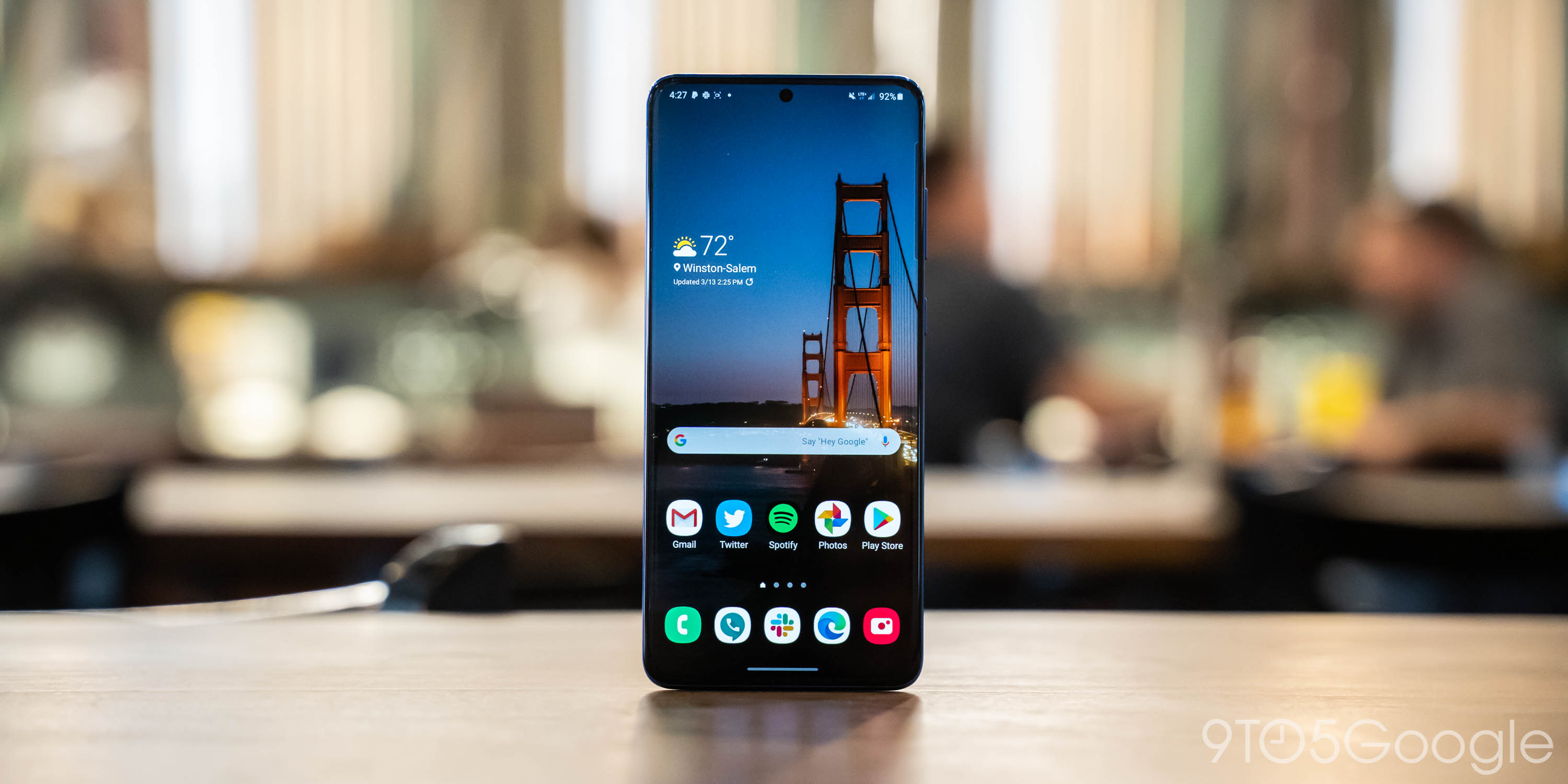
In summary on hardware, the Galaxy S20 and S20+ aren’t leaps and bounds past anything Samsung has put out in the past few years, but rather continued refinement that, aside from some uninspired colors, just keeps getting better.
Display |
Samsung has created the perfect display. End of section.
But seriously, the 6.2-inch and 6.7-inch panels on the S20 and S20+ respectively are just, well, perfect. The SuperAMOLED displays have deep blacks, strong contrast, and vibrant colors. Plus, they’re super bright when you’re outdoors and get super dim when you’re using your phone in bed (even though you know you shouldn’t). Plus, the 3200×1440 resolution is sharp even if the software tones it down to FHD by default.

However, we kind of knew all of that. Realistically, this is just an upgraded version of what Samsung has been using for a couple of years. So, what should you be excited about here? Three things.
First, there’s the punch-hole. I’m not into the whole bezel-less trend, but Samsung has certainly nailed that design. The bezels on the Galaxy S20 basically don’t exist which, visually, is gorgeous! Part of what makes that possible is a hole cut out of the panel which houses the selfie camera — a 10MP sensor. This time around, Samsung moved the punch-hole to the center which is visually much more pleasing and much less intrusive too. It’s just a shame Samsung doesn’t have space to have a proper face unlock sensor array.

Second, there’s the refresh rate. By default, the Galaxy S20’s display is the same as every smartphone display for the past several years with a 60Hz refresh rate. That means the display refreshes what’s on-screen 60 times per second. This new panel, though, has a 120Hz refresh rate. In everyday use, this means that any form of movement on your display — especially scrolling — is smoother and nicer to look at. This eats up some battery life which is probably why it’s not the default setting, but turning 120Hz on is definitely the first thing you should do when you get this phone.
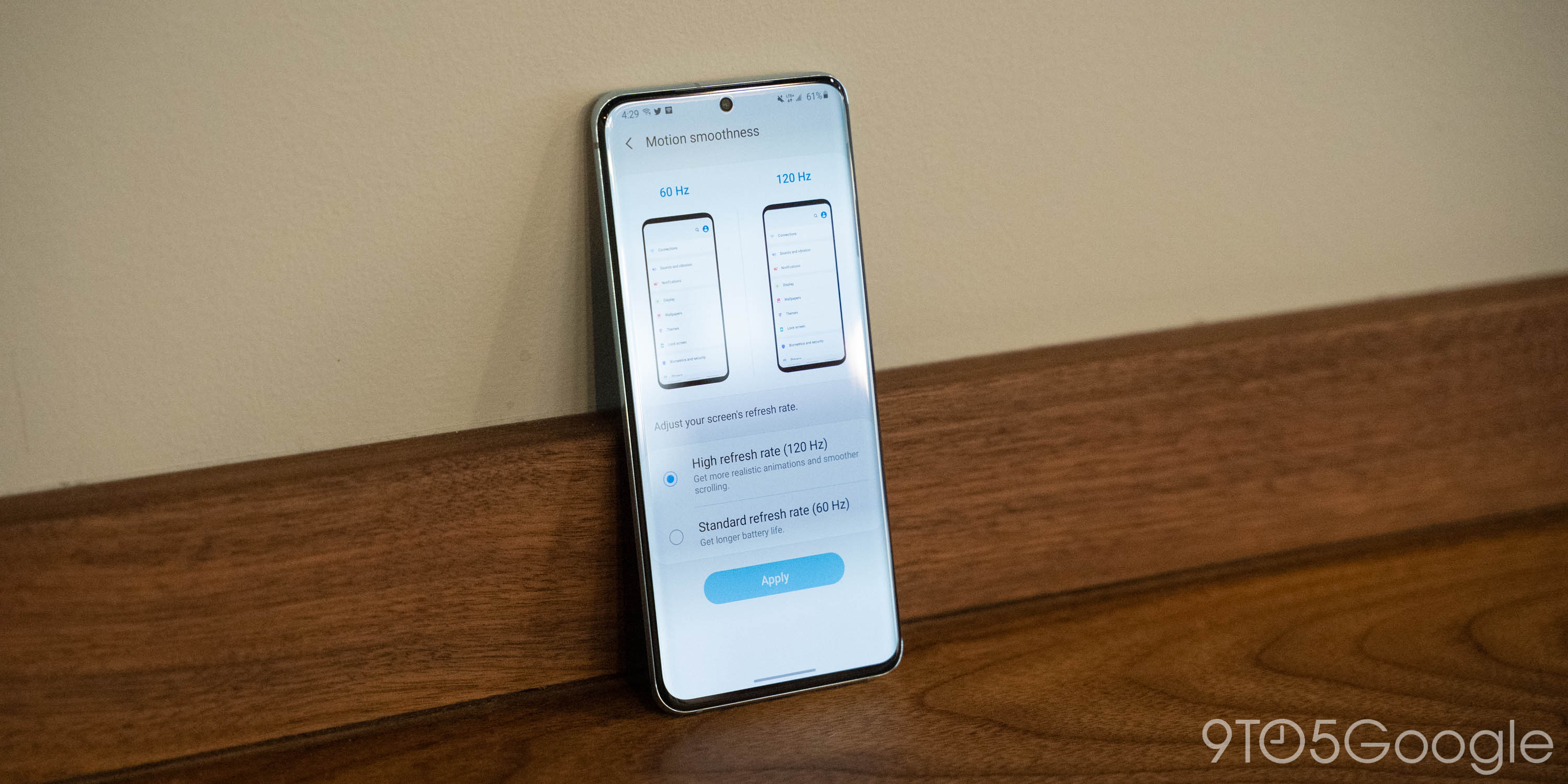
Third, Samsung is finally moving away from curved displays. While they looked cool, Samsung’s curved display edges that it’s used for several years now have just gotten old. They made screen protectors more difficult, caused full-screen videos to look a little off, and just made the design as a whole more fragile. I couldn’t be happier Samsung is finally moving away from them. There’s still a slight curve on the S20’s display, but it’s not nearly as significant as previous devices.
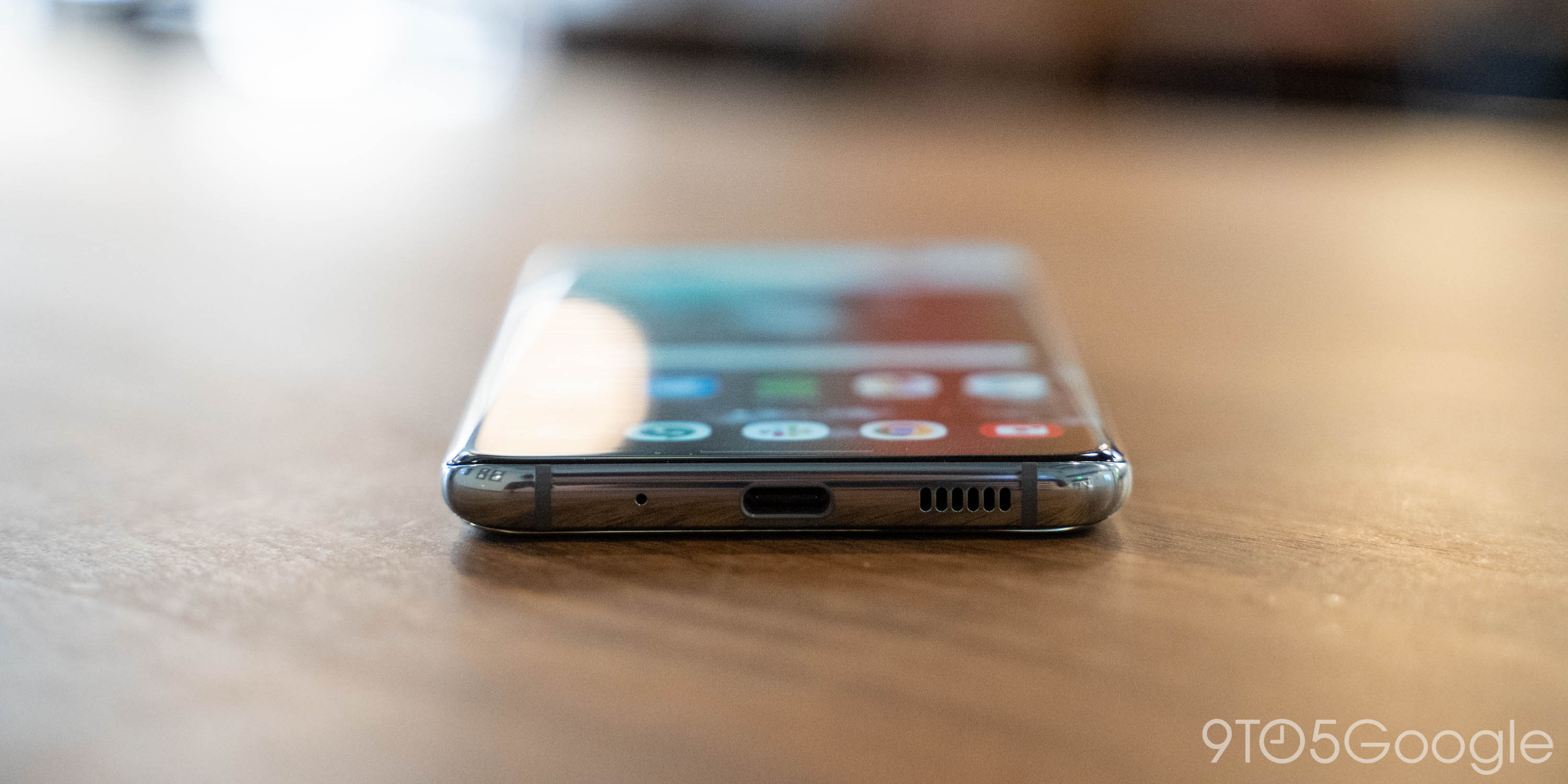
Another thing you should probably know about the S20 is that there’s a pre-installed screen protector. It’s a piece of cheap plastic which means it will scratch easily, but personally I’m glad it’s there as I hate when devices are damaged. What’s important for you to know, though, is that you safely remove it. Unlike the Galaxy Fold debacle from last year, this is just a simple screen protector that’s not essential at all. There’s no harm in leaving it on as I have so far, but there’s also no harm in removing it or replacing it with another.
Software |
Software used to be a big problem for Samsung, but the company has gotten progressively better over the past few years. With the Galaxy S20 series, you’re looking at Android 10 with One UI 2.1 over top and, for the most part, it’s really quite good!
One UI really has just about every feature you can imagine or would really ever want on a smartphone. It can flip on a dark theme, wake you up with your favorite songs, automatically crop screenshots on your behalf, and just so many more things that you probably don’t think about on a daily basis. It’d take ages to go over everything Samsung offers, but I can touch on a couple of specific functions I found myself enjoying while using the S20 and S20+.
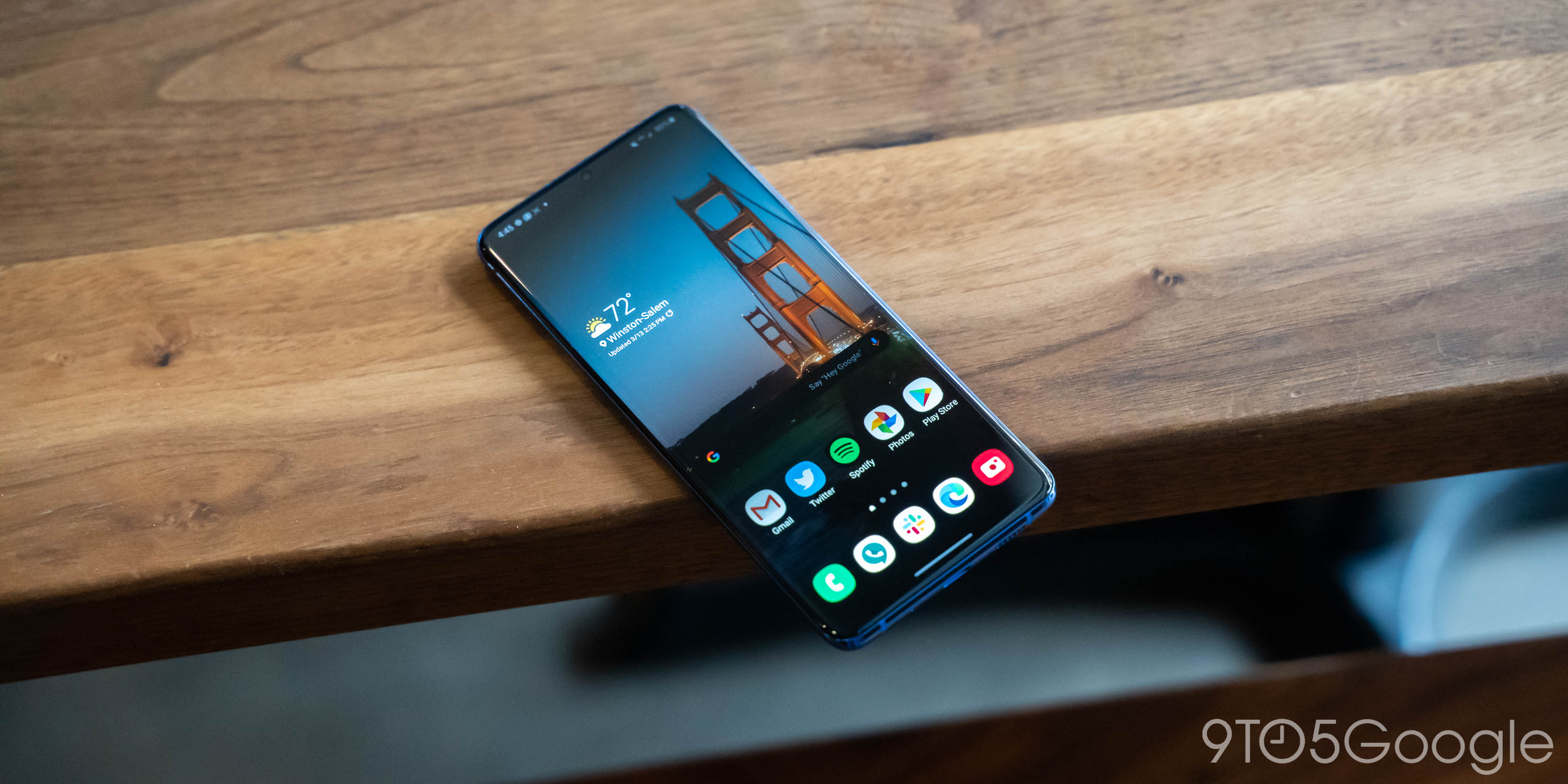
As mentioned above, Samsung’s screenshot tool is really good. It offers a lot of flexibility with screen recording, making GIFs, and making processes such as cropping or drawing easier.
Samsung also added a new feature to allow locking an app in your device’s memory. I’ve used this to lock Feedly into memory. That means I can scroll through my RSS feeds, take a break mid-way through, and come back without the app reloading on me and killing my progress. That’s genuinely useful.
That’s all great, but Samsung’s experience is not quite perfect. Because Samsung tries to do on its own and doesn’t let Android do its thing, it messes some things up. Using Android Auto, for example, is insanely frustrating with this device as DeX constantly tries to take over. There are also little things like the Smart Switch setup app that’s supposed to make things easier just not copying data properly from non-Samsung smartphones. Bixby is still here and, yes, you’ll probably want to turn it off now that it’s more intrusive too.
There’s also the fact that, still, there are settings on Samsung phones that are just super confusing. Let’s take battery information as an example. To find what’s eating up your battery life, you have to dig through menus. Samsung also has two different, apparently unrelated “Adaptive Power Saving” features. What do they do differently? Why is only one turned on? Your guess is as good as mine.

Then, there’s a menu for charging. On this menu, you can turn off fast charging — something that might be smart to save the battery over time — but there are three options. Fast charging is disabled by default, but Super Fast Charging isn’t. What’s the difference? Samsung won’t make it obvious, but fast charging refers to Qualcomm Quick Charge, something you need another adapter entirely to use. This is very confusing, Samsung!
Samsung’s software experience is sort of a compromise. You have you could really want and that’s good! But having everything can be overwhelming and confusing too. It’s all a matter of choice and that’s the beauty of Android, really.
Performance, by the way, is truly excellent. The Snapdragon 865 combined with 12GB of RAM is an amazing combination that delivers blazing performance day in and day out.
Before closing this section out, though, I also wanted to talk about updates. Samsung is really good at security updates! You’ll get monthly patches for the next couple of years and, more than likely, regular patches for a couple of years after that. Just don’t be shocked when 2 years from now, the Galaxy S20 has gotten its last major Android update. It’s going to happen and it’s a shame.
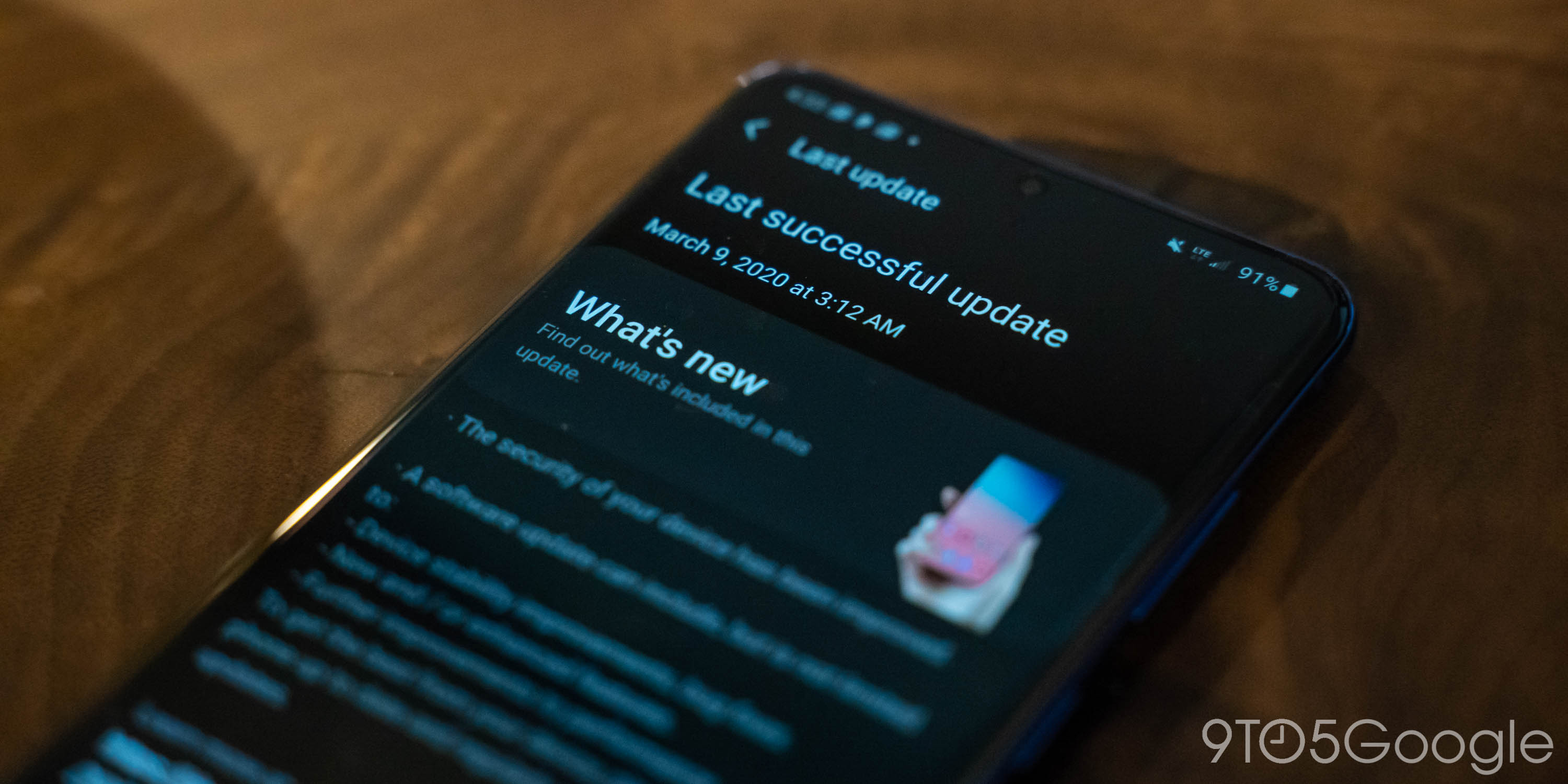
Battery Life & Charging |
Confusing settings aside, the battery life on both Galaxy S20 models is solid. The smaller S20 has a 4,000 mAh battery while the S20+ has a 4,500 mAh battery. Put simply, if you want the best battery life, you should buy the S20+, but both are absolutely excellent.
With the smaller S20, I consistently was able to use the phone as heavily as I pleased without fear of it dying before bed. My heaviest day saw the device running from 8 am to midnight with just shy of 4 hours of active use (screen-on time). During that day, the device was only charged briefly while running Android Auto in my car on a quick trip for some errands, but by the end of the day, the device was left with about 10% before I plugged in.
That’s really good for a “small” phone!

As for the Galaxy S20+, my results were sometimes good, sometimes not so much. The culprit on those not-so-good days, though, was the fact I was using Google Fi on the device. There’s clearly some optimization to be done on that network, but switching over to another carrier such as Verizon solves the problem. There, I can manage the same results as the smaller S20, but with 25% remaining if not more.
Those results are also with 120Hz enabled in the settings, so I’d imagine battery life will be even better for most people. By default, Samsung doesn’t have 120Hz enabled, so while I couldn’t imagine a crazy difference in power consumption, you’ll probably get a boost of around 10%.
If somehow, that battery life isn’t good enough for you, you’ll be pleased with the charging options. There are USB-C and Qi charging here that works on any cable or pad, but Samsung didn’t stop there. In the box, you’ll have a 25W “Super Fast Charger” which fills this device up very, very quickly. One night, I failed to charge my S20+, but the 25W charger was able to fill it up in under an hour from its roughly 40% total.
There’s also fast Qi charging. I don’t have a Samsung Qi charger on hand, currently, but I was able to get quick speeds from a Nomad wireless charger I keep at my desk.

Camera |
Ok, let’s talk about cameras. The cameras on our smartphones are, arguably, some of the most important parts of the device. No one carries dedicated cameras around anymore, they just use their smartphones. It’s imperative that these cameras work well, are reliable, and capture excellent shots.
With all of that said, I’ve been very disappointed by the camera on the Galaxy S20.
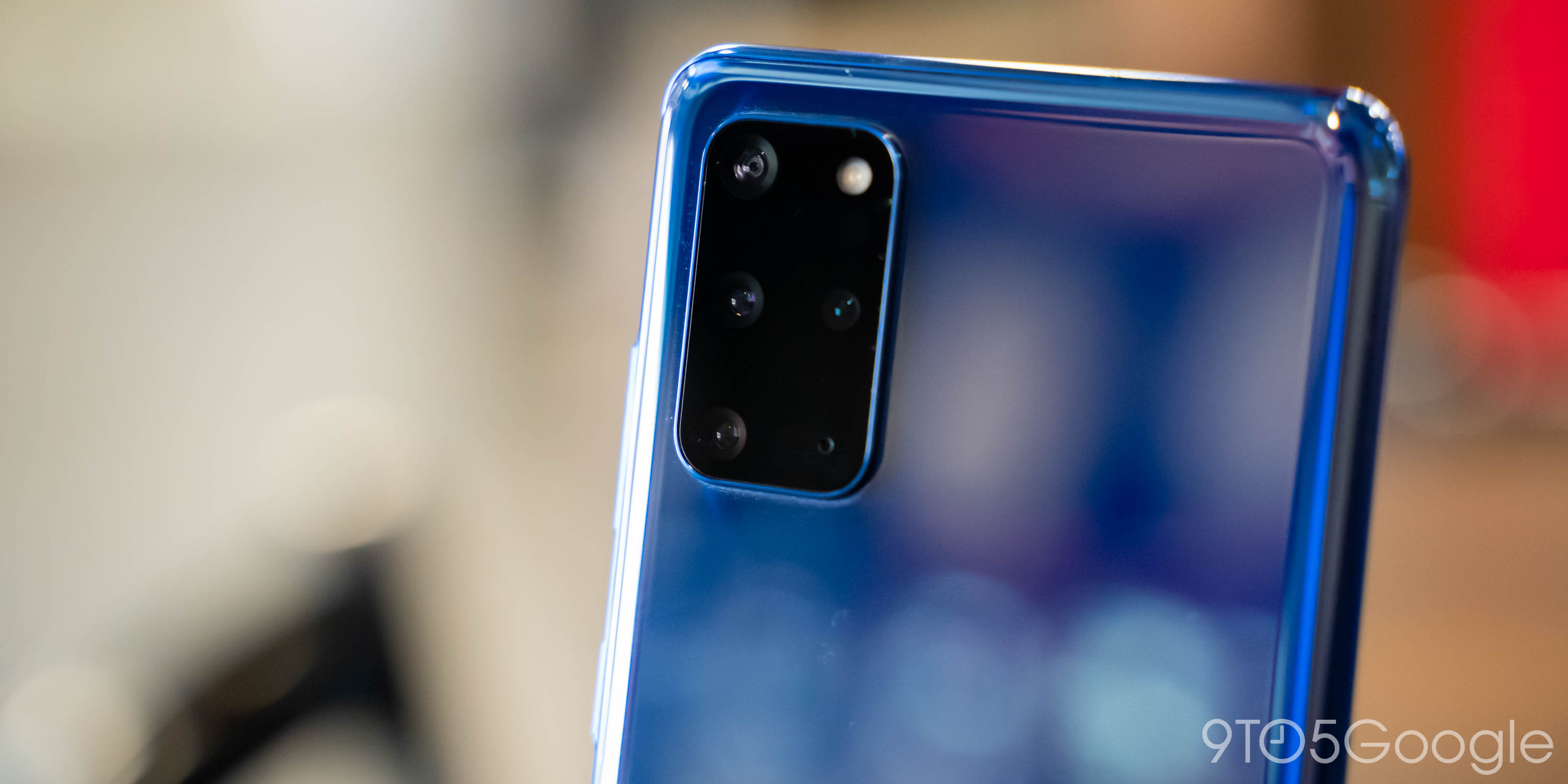
Let’s start by talking about the good. With either S20, you’ll get a 12MP primary, 12MP ultrawide, and 64MP telephoto camera with the S20+ also adding a ToF sensor to the mix. That makes a very versatile camera experience that will be able to capture almost any shot and, often, the results are very very good!
The primary 12MP camera is capable of taking detailed, stunning shots especially outdoors. When there are vivid colors in the mix — such as a sunset or fruits — the colors really pop! The ultrawide camera also really comes in handy for outdoor shots of landscapes or buildings since you can get more of the frame in the same picture without moving from your location.
Samsung’s biggest push on the S20 camera is around the zoom. The 64MP telephoto camera is used to capture faraway subjects in great detail and, for the most part, it lives up to that! The camera itself can capture 3x zoom with software helping it reach 30x. At its upper limits, the results start degrading greatly in quality, but they’re still usable depending on the context.
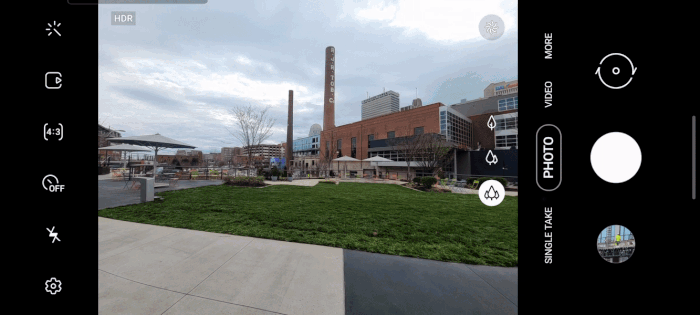
Looking at shots from the S20, the colors are great if a little saturated, the details are sharp, and Samsung’s HDR has come a long way too. Based on landscape shots alone, I’d rank Samsung closely behind Google’s Pixel and Apple’s iPhone! At least, I’d do that before looking at a few other things.
Video on the S20 still isn’t at iPhone levels, but it’s some of the best you’ll get from an Android phone. Bonus, too, is 8K support! Night mode is also available, but it’s not all that crazy. Sometimes it nails a shot, but others the results don’t come out great. The results are definitely better than past Galaxy devices, but I wouldn’t call it ground-breaking. The camera app is also a highlight with plenty of modes and flexibility in the shooting experience.
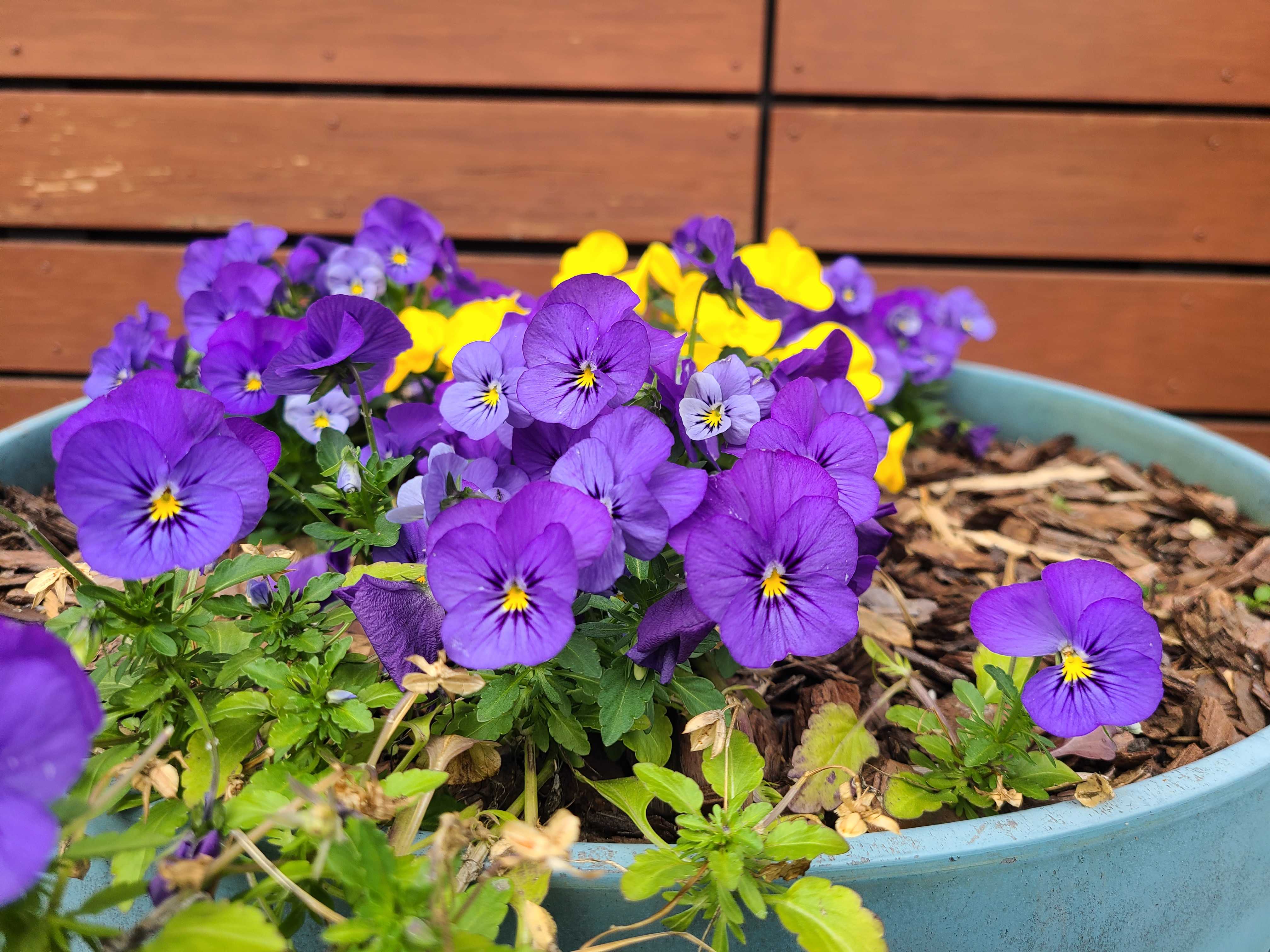
There’s a lot to love about the Galaxy S20’s camera!
The problem with the Galaxy S20’s camera is that it all falls apart if you put a subject you actually care about in the frame.
When I say a subject you care about, I mean a human or animal subject — a shot that you’ll probably only get one chance at. Here, the S20’s camera is unreliable and often actively ruins shots. Let me explain.
Samsung’s cameras completely change their behavior when any kind of face is visible. Details are smoothed over for reasons I can’t understand and there’s no way to turn it off. Turning off the “Scene Optimizer” or switching to Pro mode helps slightly, but it doesn’t fix the root of the problem. Rather, you just get something the looks air-brushed.
In the viewfinder, this isn’t a problem. I’ve been looking at the shot I’m about to capture and been stunned at the details, but once you press the shutter button and Samsung takes the photo to be processed, everything changes. I found this most evident when taking pictures of my dog, Rey. Pictures that should be simple are heavily smoothed over. This shouldn’t even be happening for animals!
On top of that, when faces are detected, Samsung’s processing will exaggerate lighting. The entire scene gets brighter which, in some aspects is a good thing, but in other situations, it can mess up the shot and leave you with a photo that’s not accurate to the scene.
All of this is to say, I don’t trust Samsung’s cameras. When I hit the shutter button on my S20+, I worry that the shot won’t look like what the viewfinder shows. For landscapes and still objects, it’s usually fine! But if I try to take a picture of my wife or even my dog, I’m almost certain all the details will be smoothed out and, if it’s the latter, that any motion will result in a blurry mess. There’s no middle ground, either. The shots are either good, or really bad.
I can’t imagine using this phone if I had a child, either. In that scenario you need to know that every picture is going to come out right and, very often, those shots are going to be once-in-a-lifetime moments!
Trust is something I have in the camera on Google’s Pixel. Why the comparison? Because the issue with Samsung’s cameras is in the software. This is something that Google has absolutely nailed. Yet, Samsung has been dealing with these same smoothing issues for .
At this point, it just feels like Samsung is ignoring the improvements that Google and now Apple have been making. Samsung is very capable of fixing all of this, but they just haven’t and that sucks. Plus, we know that Samsung is capable of fixing this because if you use the selfie camera, all of these problems go away!
Samsung says that a software update is coming, but I’d be genuinely shocked if it really fixed these smoothing issues. Meanwhile, Samsung just relies more on the camera to advertise its phones charges more for them. That’s not how this should work.
Tidbits |
Thanks to its very slim bezels, there’s not much room for speakers on either S20. As a result, there’s one downward-facing driver and another very small speaker at the top of the device. They get very loud, but the sound is mostly unimpressive. It lacks depth and at high volumes sounds “shouty.”
Hidden under the display on the Galaxy S20 is an ultrasonic fingerprint sensor. It’s… fine. This is the same sensor I disliked in the Galaxy S10, but it seems Samsung’s software has gotten better and the placement of the sensor is better too. Personally, I’d rather have a good face unlock or a capacitive rear sensor, but this is fine and gets the job done.
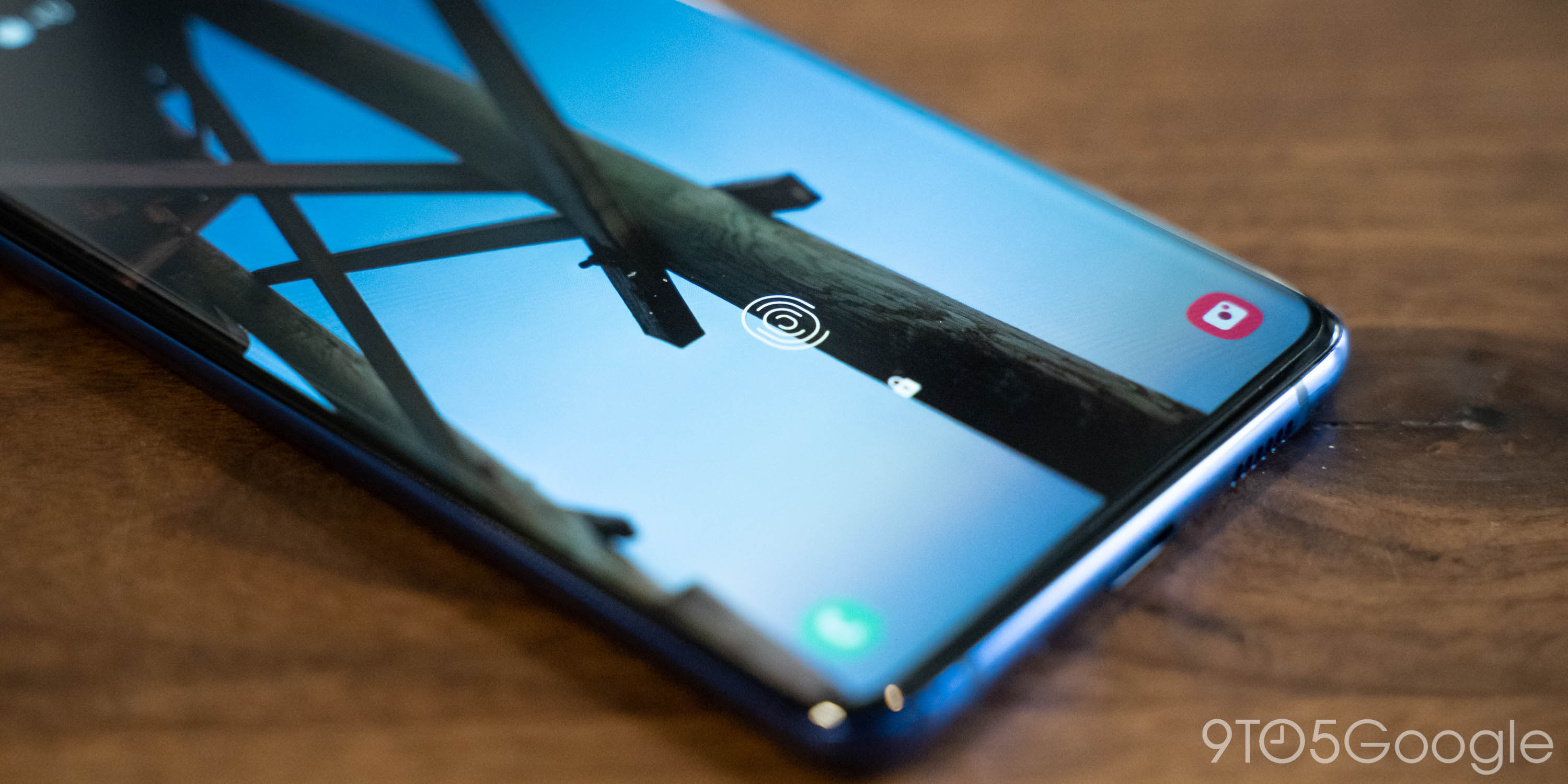
Don’t use it. It’s very insecure.
To be clear, absolutely no one should buy a Galaxy S20 just for the sake of 5G, but it’s a nice future-proofing measure. 5G isn’t really ready in the US yet, but it works well on the S20. I spent most of my 5G time on T-Mobile’s low-band network through Google Fi.
What’s important to note is that, if you are excited for 5G, you shouldn’t buy the smaller S20. It lacks the mmWave radios that Verizon is using for its 5G network currently and which, in the future, will hopefully be more readily available.
5G is coming and that’s very exciting, and the S20 series is a huge step forward to the future.
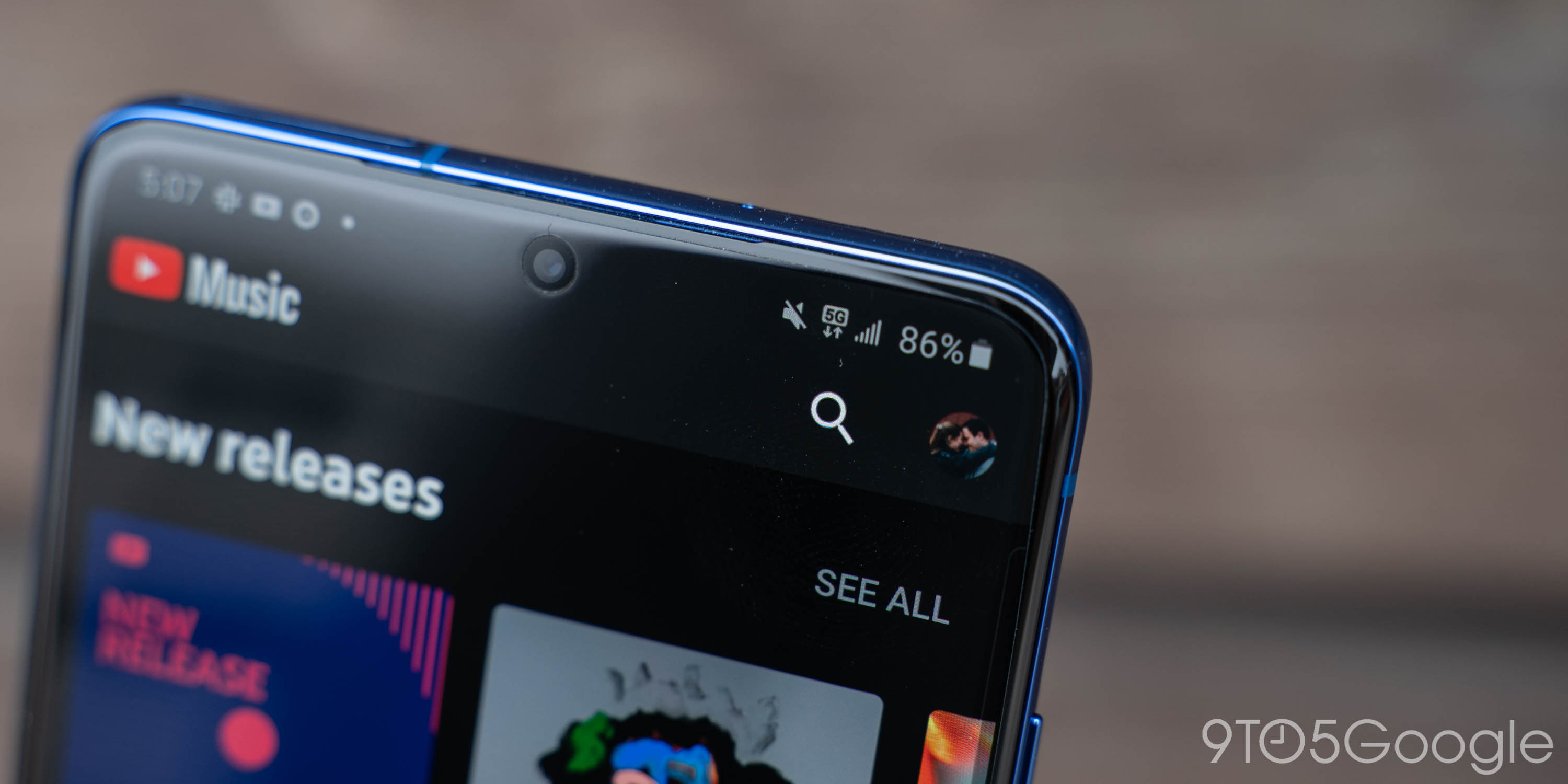
As mentioned earlier, there isn’t one. It’s a shame, but it’s not a deal-breaker. This is 2020, the headphone jack is unfortunately dead. Either live with it or don’t buy a flagship smartphone. At least Samsung includes a set of wired USB-C buds in the box and offers some decent wireless options too.
Galaxy S20 or S20+: Which should you buy? |
The Samsung Galaxy S20 and Galaxy S20+ are great phones. The cameras are sometimes frustrating, but the experience as a whole here is really, really good. There’s so much to love about the S20 series, but you’ve got to pick one or the other.
Should you buy the Galaxy S20, or S20+? If you want better battery life and a bigger screen, get the S20+. It also comes with the perk of mmWave and the gorgeous Aura Blue color too. Realistically, the S20+ is the best model for people. So, who should buy the baby S20? That model is best for those who have smaller hands, want to save some money, or just don’t want a goliath. Hey, it also comes in pink too!
What about the S20 Ultra? Let’s be honest here, no one should really buy that phone.
Final Thoughts |
Samsung is the biggest Android manufacturer and its Galaxy S series is the pinnacle of what it delivers for the year. It’s the first device Samsung releases every year, the showcase for new technologies and a blueprint for the year’s Note too. The Galaxy S20 delivers so, so much and really only falls on its face with the camera. Outside of that glaring issue, it’s a really great smartphone!

The real question is whether or not it’s worth $1,000. Personally, I have trouble saying that it is. That’s a lot of money and, really, you’re not getting that much more than previous generations. $1,000 demands near-perfection and I don’t think that’s what you’re getting. Samsung needs to fix this camera and work on long-term support (and resale value) before we’re at that point.
Most likely, the Galaxy S20 will go on sale in a few weeks to shave some money off of its price point. If you want it right here, right now, go ahead and spend the money. Both are available at , , , , B&H Photo, , Amazon, and . Really, you probably won’t be disappointed, but you’ll probably be happier if you wait for a sale.
Author: Ben Schoon.
Source: 9TO5Google



















